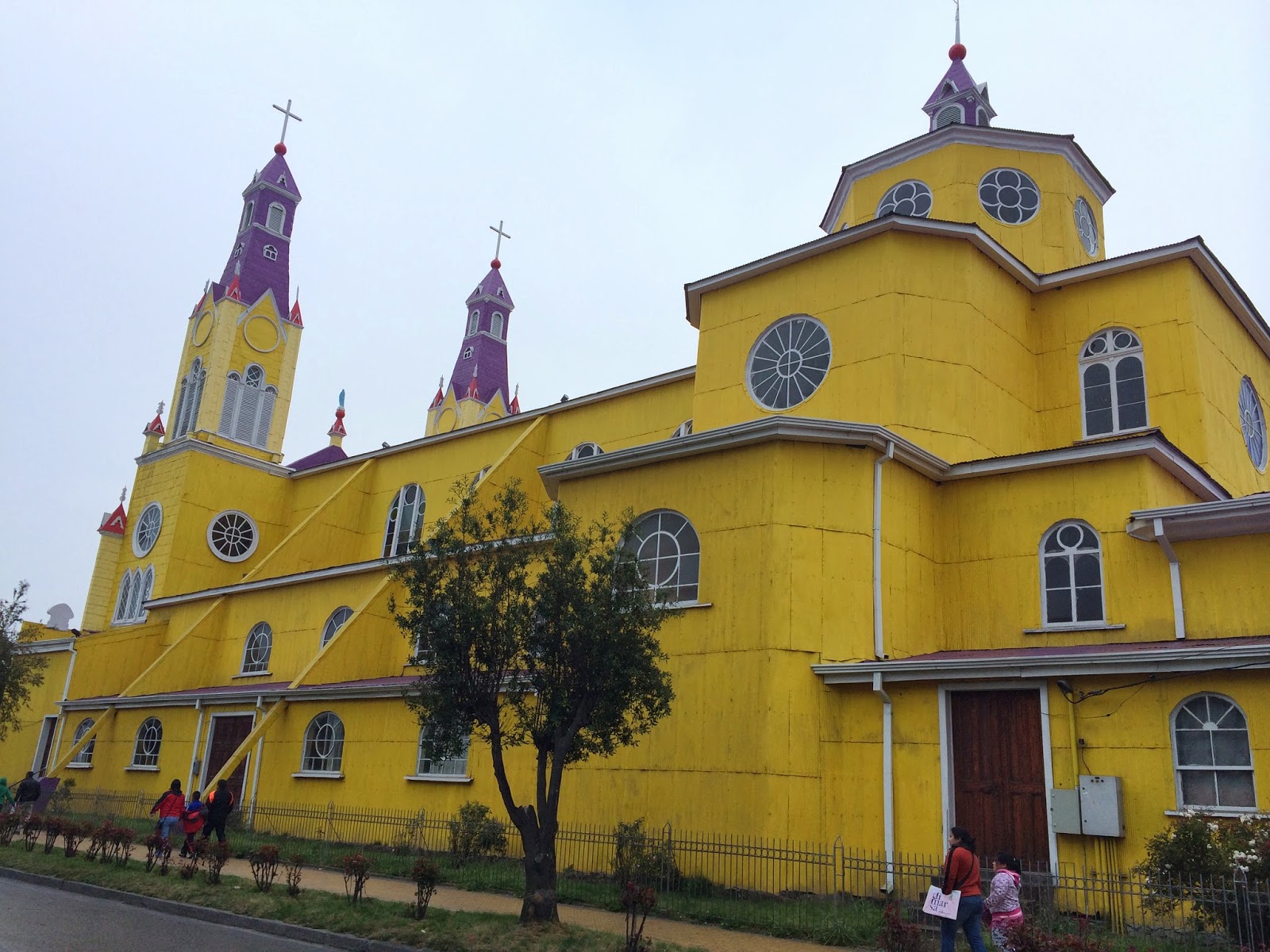4 March 2014
Phase II of the pre-adventure adventure began with a plane ride, bus ride, and ferry ride to the island of Chiloé, famous for its wooden churches, mythology, and seafood cooked in a hole. First, the churches.
Castro is the biggest city Chiloé has to offer. It is also home to the biggest of the 16 UNESCO World Heritage wooden churches built in the Chiloé Archipelago in the 19th century by Jesuit missionaries. The outside certainly looked impressive (and vaguely Minnesotan in color scheme...), but a sign on the locked gate informed us that the inside was closed for cleaning.
 |
| Disapproving Ninja disapproves of locked churches |
 |
| The color scheme seemed less outlandish at night. |
|

In the meantime, we walked a circuit around town and admired the
palafitos, houses on stilts over the water.
 |
| Unassuming front side... |
 |
| ...hiding a secret identity out the back door. |
 |
| panorama overlooking Castro |
We also visited the market, which boasted many handicrafts, fruit, seafood, the most gi-normous garlic I have ever seen, and lots of this:
It's called
cochayuyo, it's seaweed, and people eat it. I never figured out how, besides via jars of jam for tourists.
Later that afternoon, Iglesia San Francisco de Castro had finally opened its doors. After the oh-so-Latin American color scheme on the outside, the interior made a stark contrast. They weren't generalizing when they called this a wooden church. The exterior structure, yes, but also the interior, and on a cathedral-sized scale. The sun even made an appearance at last, and between the stained glass and afternoon light on the honey-colored wood, every surface radiated with a warm glow. Simply gorgeous.
Lest the place seem
too heavenly, there was the usual motley array of statues you find in Latin American Catholic churches.
Mary was tasteful.
The Archangel Michael vs. Sin was certainly action-packed.
I thought the Tin Man was an odd choice to include, though.
--wait, sorry. He was outside.
And then there was this puzzling statue of Christ carrying the cross:
Jesus is bearing not only the weight of our sin on his shoulders, but also what appear to be three large serving forks in his head.
First reaction: ...whaa...?
On further thought, they are painted gold and forking outward, so I assume they are meant to be rays of glory. They just
look like forks.
It got me thinking. Our perception of glory is so flawed, and our ability to recreate it even worse (see above photo), but God accepts our efforts anyway, like any loving father.
You drew me a picture? That blue blob on a stick is me? That's wonderful, let's put it on the fridge! I think God has a sense of humor about the forks, and it's a good thing He does. I fork up a lot.























































